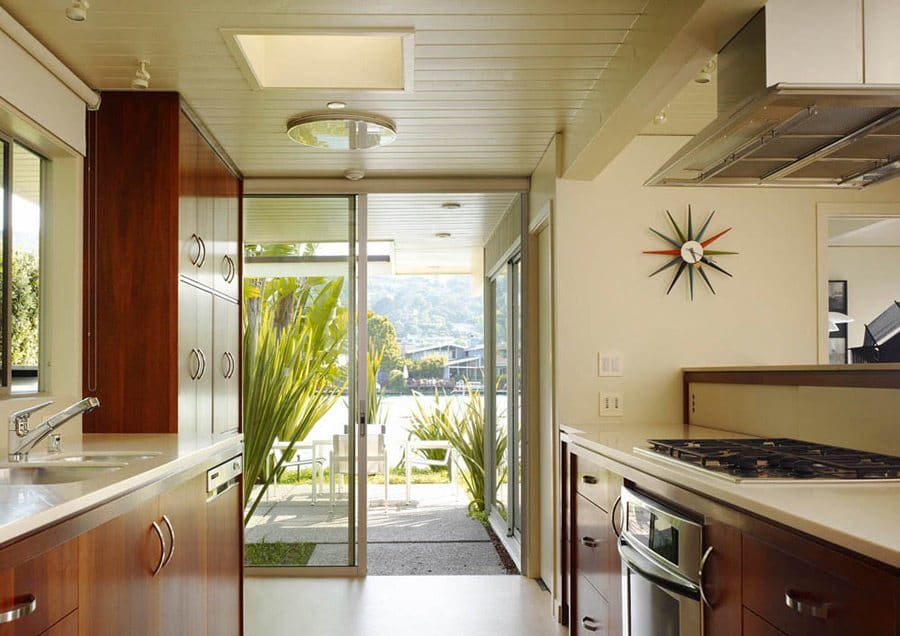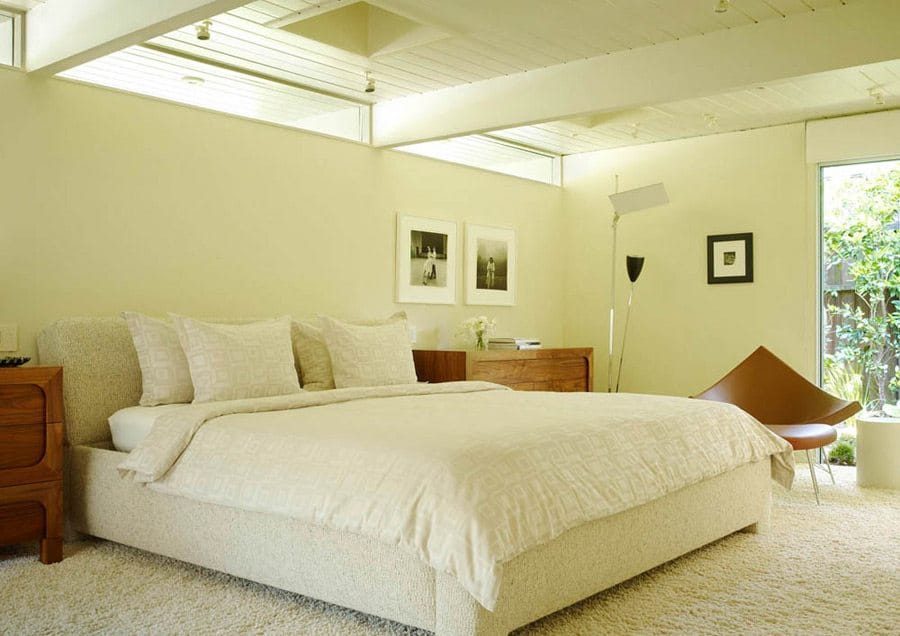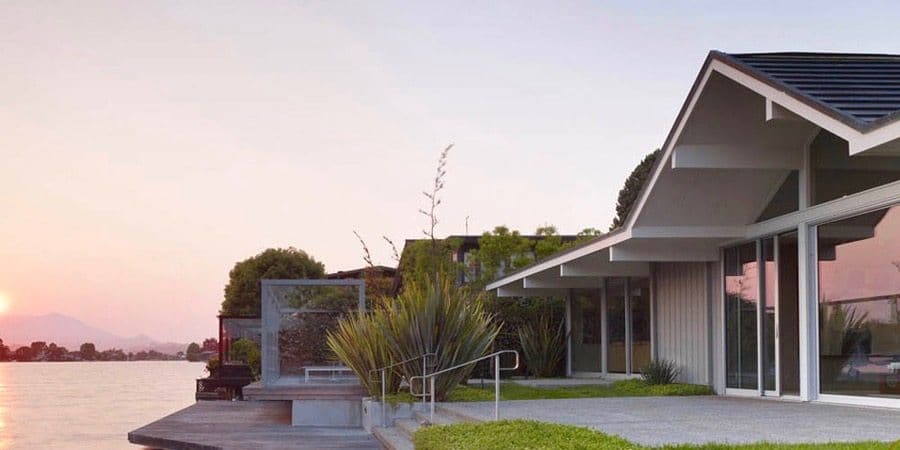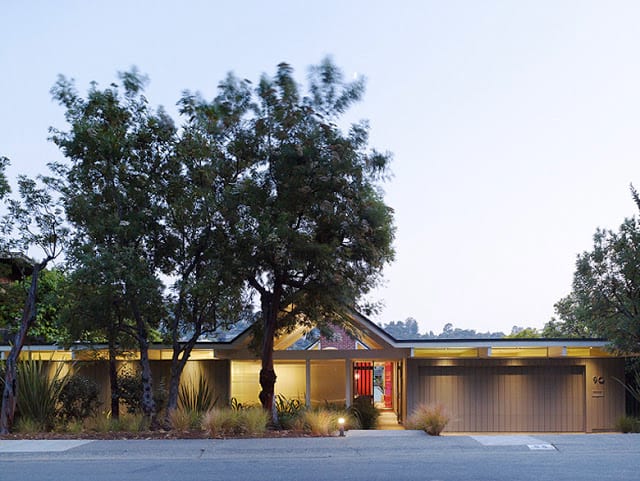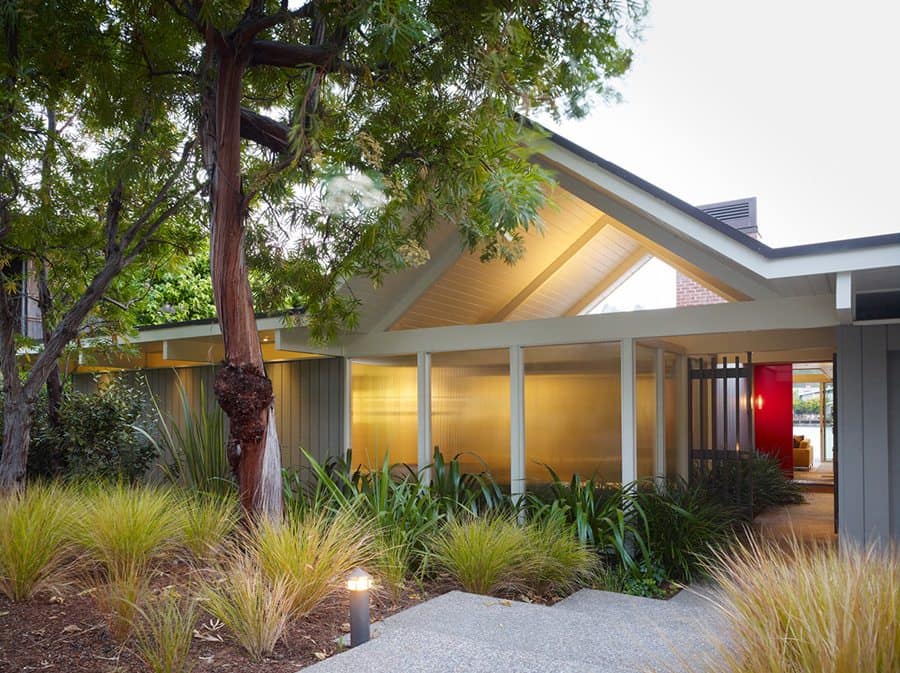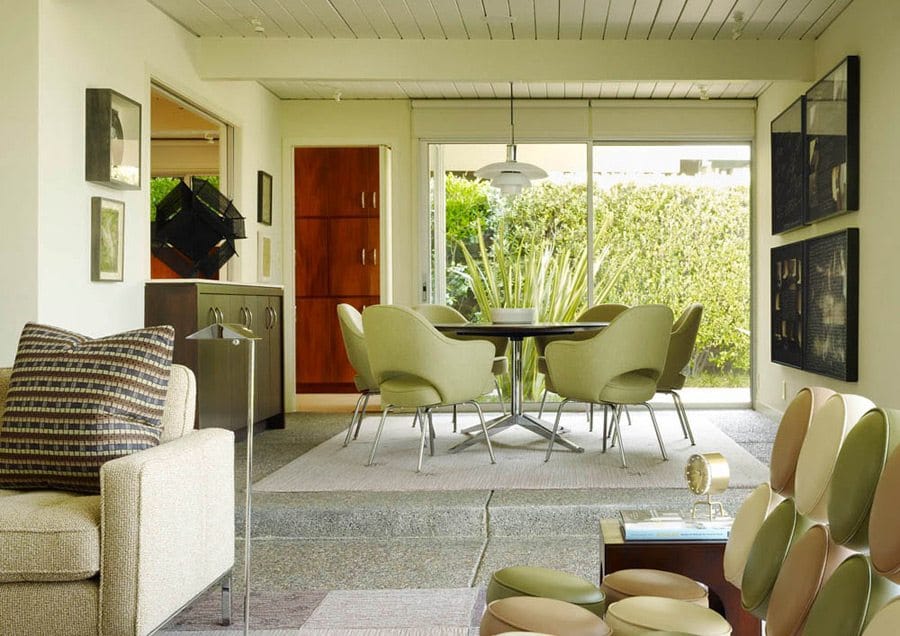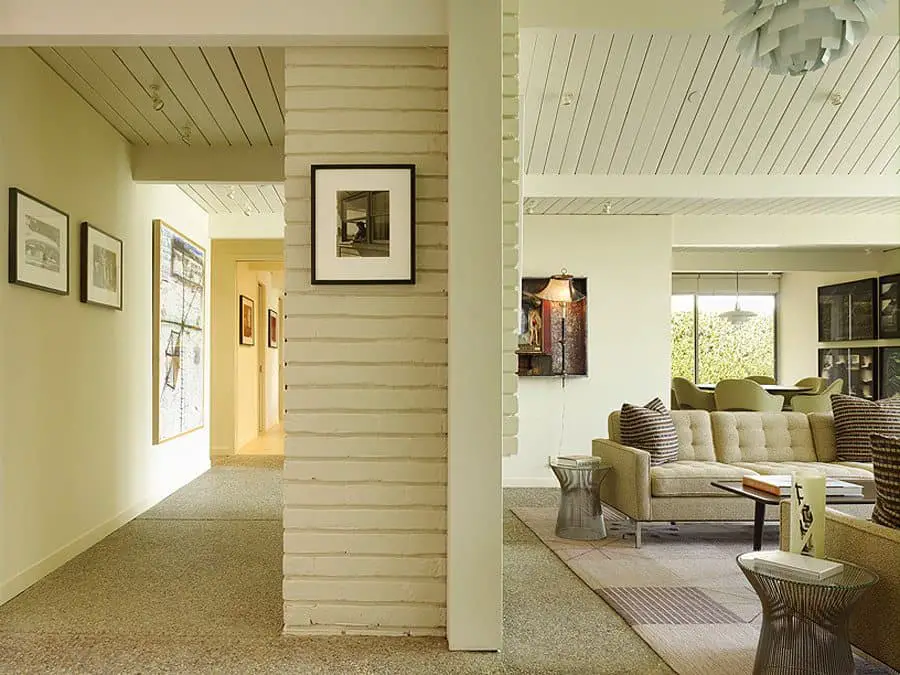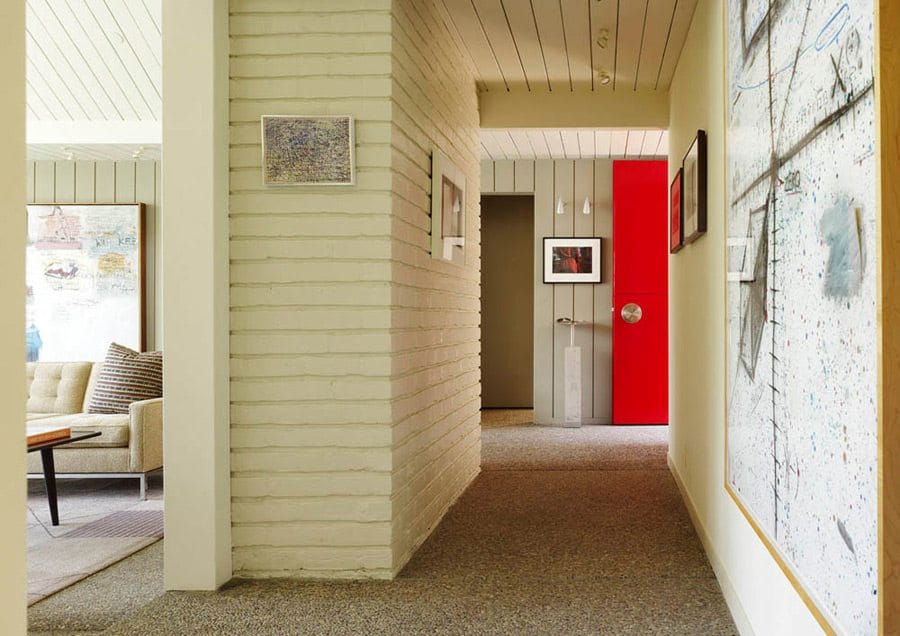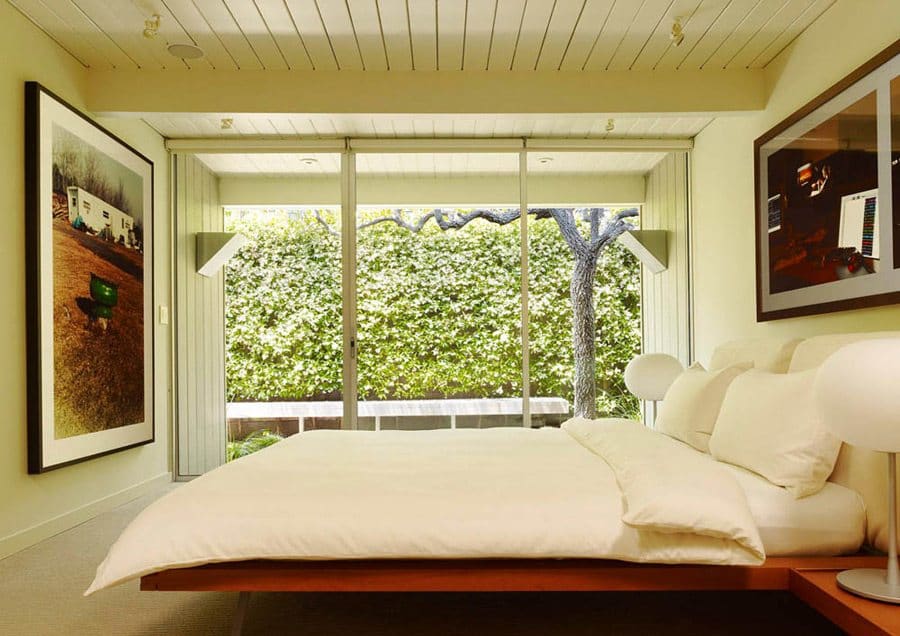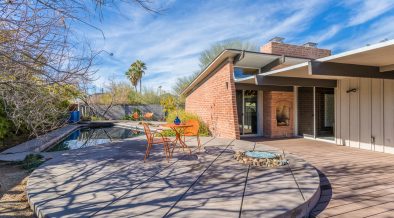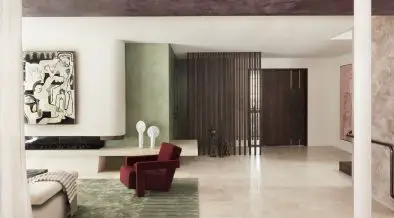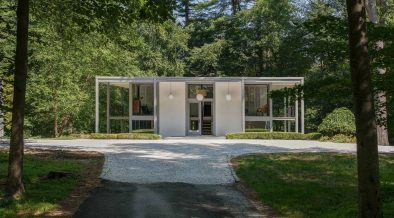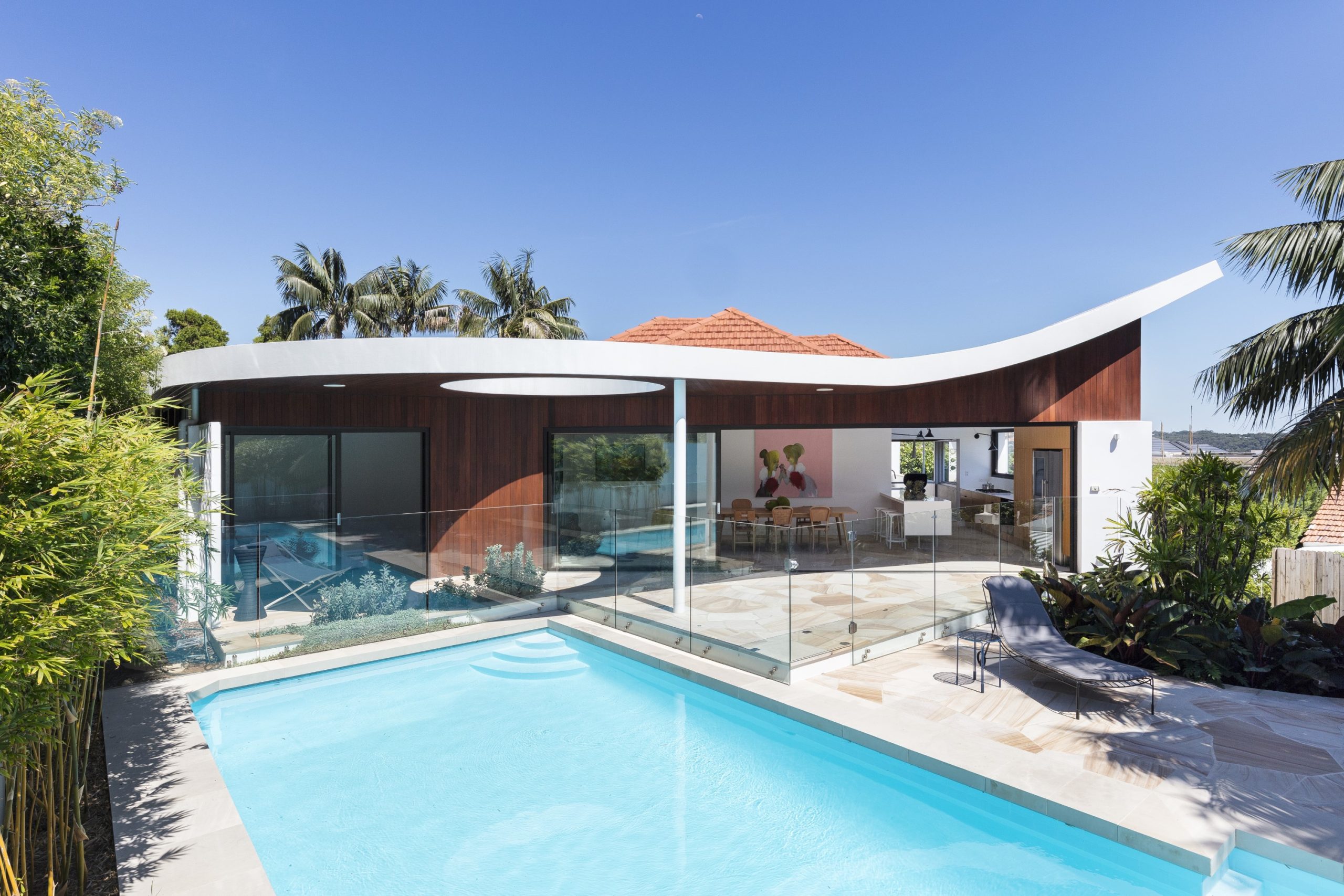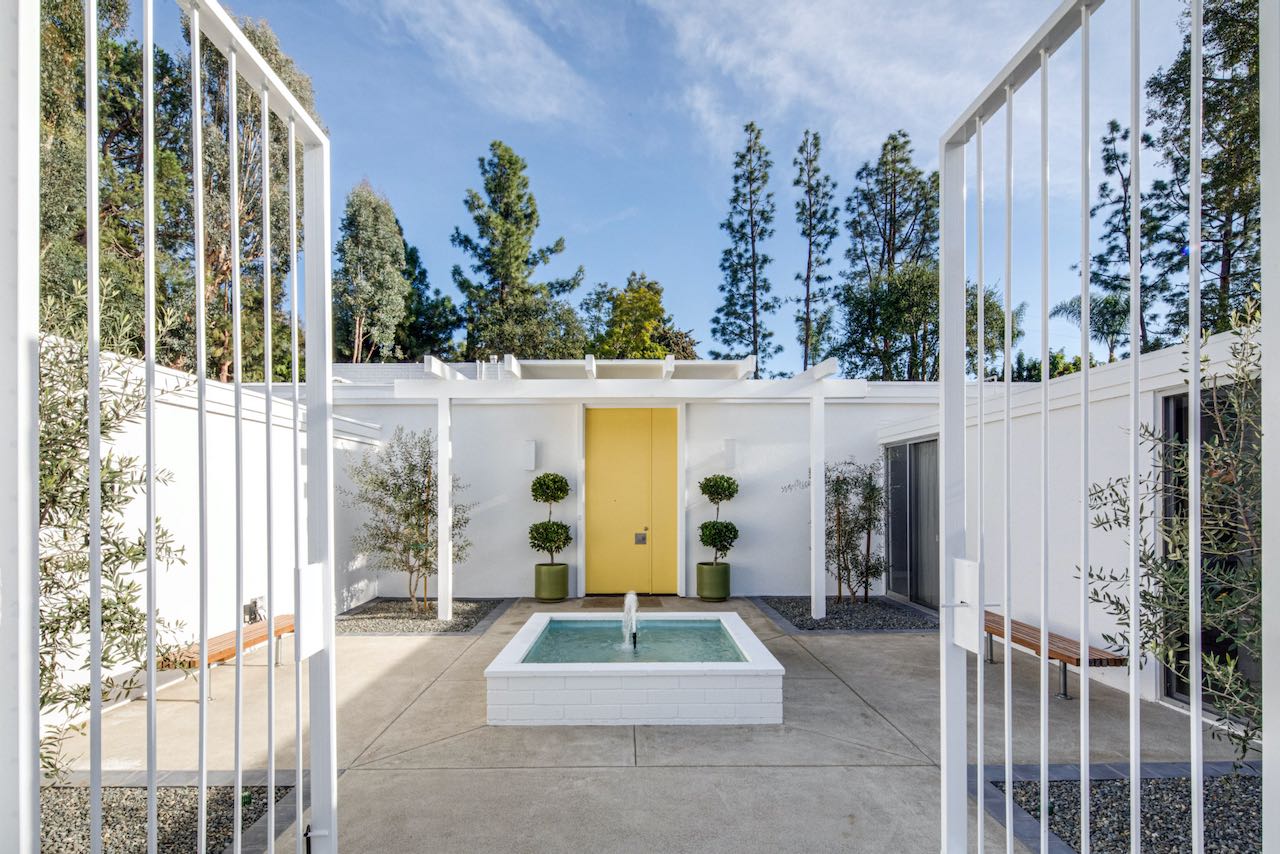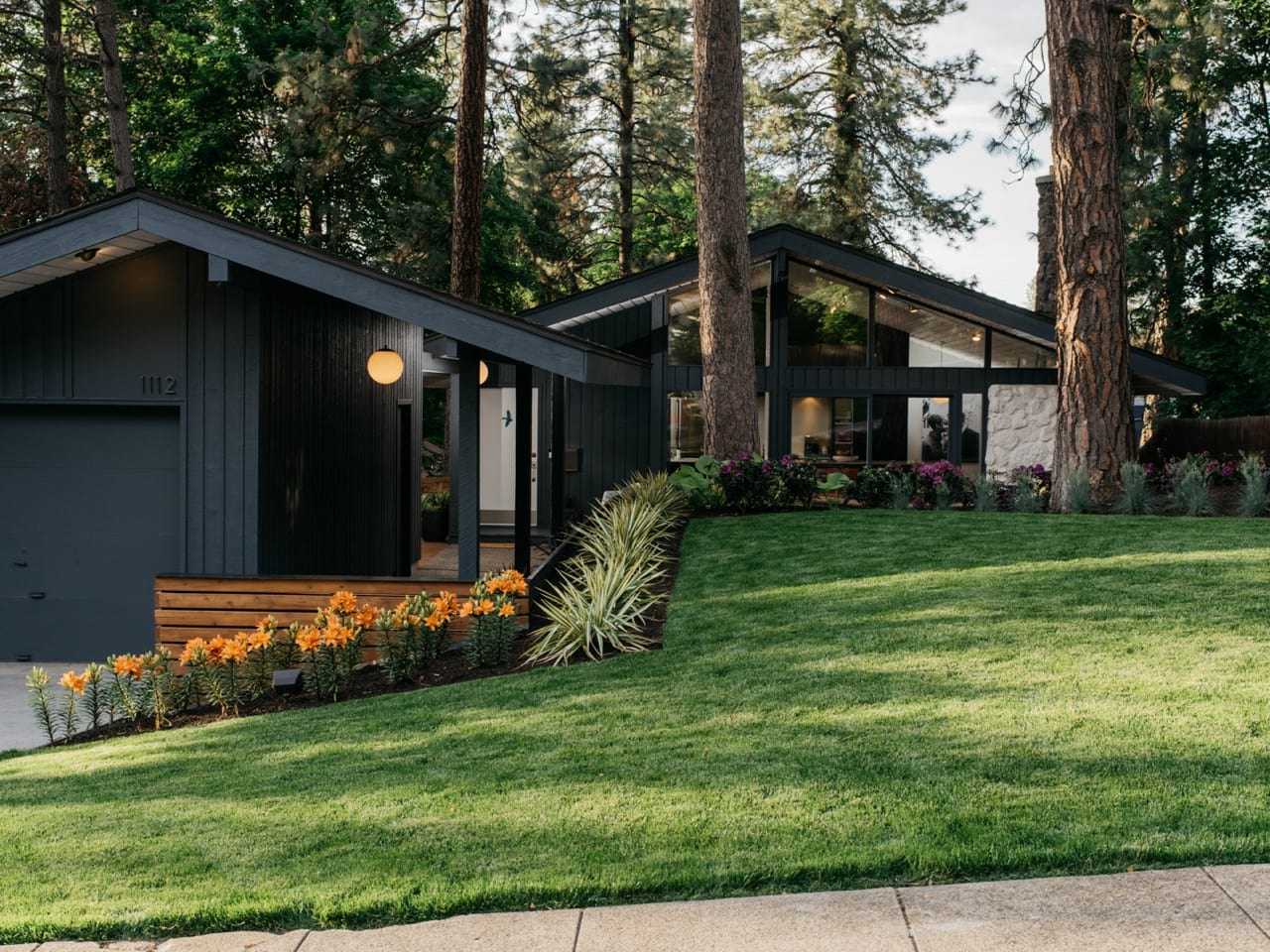In 1950, the December issue of the magazine Architectural Forum featured a “Builder’s House of the Year”. It was designed by the architect A. Quincy Jones. The same issue also awarded “sub-division of the year” to the great housing developer Joseph Eichler. It was to mark the beginning of a fruitful partnership between that year’s best builder and its best architect, lasting until Eichler’s death in 1974.
Shortly after the issue came out, Eichler invited Jones to tour the Palo Alto development he had just completed. Seeing the scale at which Eichler was working prompted Jones to explore new avenues for housebuilding. One of the main innovations he was able to implement was the introduction of park-like common areas in tract housing developments. Completed in 1964, the so-called Lagoon House is an excellent example of how this idea worked in practice.
Situated not too far away from the Palo Alto development, at the edge of the San Francisco Bay waterfront in California, the Lagoon House was designed in the middle years of their collaboration. It was one of twelve custom-built houses.
Jones’ aim was to expose the moderate income family to the modernist idea of blurring the boundary between the interior of the house and the environment exterior to it. He wanted to extend to them the experience that was previously the preserve of the individual and high-end customer of individually designed modernist projects.
The property was remodeled in the 1980s and by all accounts the result was notable for its failure to do justice to the original design. However, through the work of architect Craig Hudson and interior designer Gary Huttion, the Lagoon House has recently been restored to its former glory.
Hutton’s team were able to get their hands on the original designs of the house from Jones’ widow and as this early commitment to an accurate restoration suggests, they have been very faithful to the mid-century aesthetic. The property is now skirted all around by neat decking, albeit with a weathered finish which blends with the natural setting. The overall pallet evokes the colours outdoors, with grey marble floors, cream, and off white, offset by the odd touch of bright red. The overall feel is of a cool, clean, waterside retreat.
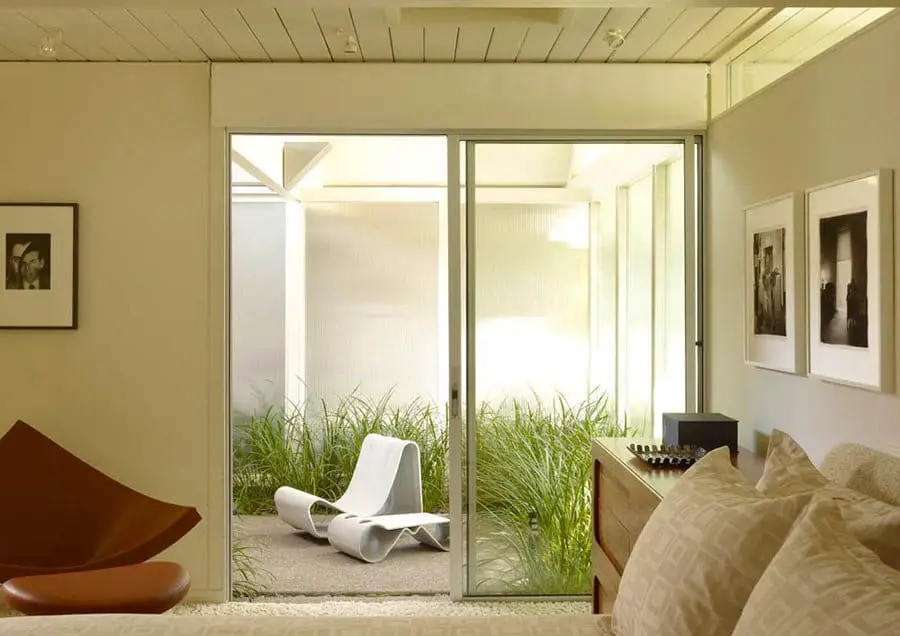
In keeping with the mid-century atmosphere, nature makes a welcome intrusion in the main bedroom with a small outdoor area replete with Willy Guhl “Loop Chair”. Reeds have been planted around the corners of this little space, reminding the occupants of the outdoors while still affording them the opportunity to bask in the sun with a degree of privacy.
As the pictures demonstrate, the Lagoon House is an instructive example of how to revive a once forgotten gem of mid-century modernism.
I would say, at the risk of repeating what many have said about living in a MCM home, that the biggest advantage is quality of life. A design that incorporates both privacy and expansive walls of glass, seamless interaction between indoor and outdoor spaces, and beautiful, simple open concept. Another advantage of a simple and sophisticated architectural design is that whether you want to go for an understated, minimalist look or opt for a well-travelled, art-gallery, multicultural look (that a friend calls “modern-baroque,”) the structure supports and enhances your personal aesthetic. I must admit that so far I have found nothing that I could call a struggle.
